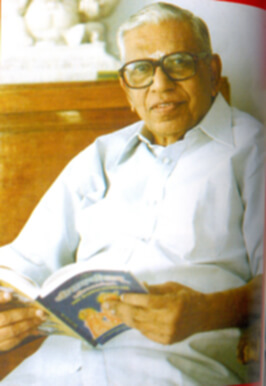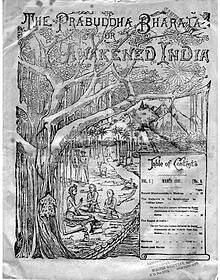Registered with the Registrar of Newspapers for India under R.N.I 53640/91
Vol. XXIX No. 19, January 15-31, 2020
Archives: Vol. XXIX No. 19, January 15-31, 2020
When Kolam-s Carry a Message
by The Editor
Enough and more has been said on the subject of stifling dissent and readers of Madras Musings must be wondering as to whether yet another article on the subject is at all warranted. But even if we were to wish away what is happening elsewhere in the country, and we certainly cannot do that, the recent occurences in Chennai have taken us by surprise and it is we feel necessary to speak out on what the city stands for.
But for those who are not aware, a brief recap is necessary. The Citizenship (Amendment) Act 2019 is the current subject of discussion and enough and more has been written, spoken and shouted about, for and against it. There have been protests of various kinds across the country, some led by political parties and the majority by activists and students. In Chennai too we have seen some protests though the intensity is a lot less here, which by the way, cannot be construed as assent for the Act. In the midst of all this, some people came up with a novel way to register disapproval. They wove the message in to kolam-s – the traditional patterns of rice flour drawn on the threshold of any Hindu household in South India. It was a unique protest and fairly innocuous. But the level of retribution that descended on those who came up with this idea was inordinate. Eight of them were rounded up, one of whom was denounced as a person with Pakistani leanings – all this in our city where we have prided ourselves on our tolerance.
Chennai has much to be proud of by way of its history of secular thought. This is where inclusion became a way of governance way back in the 1920s, long before Indian independence. This is where a temple’s tank is located on land given by Muslims and a cave associated with the Pandavas has been used as a mosque for centuries. Like all settlements in India, we have seen displacements of one community by another, as evident in some of our shrines, but we have accepted these and moved on. So can we not accept dissent also as part of life and deal with it through discussions, debates and dialogue instead of making the State’s law-enforcing machinery descend on a few individuals? What hope does the latter have against the former and is it at all warranted?
The Pope and the Price of the Fish
by A Special Correspondent
The raging price of onions reminds us of the saying in Economics that forms the title of this article. Till 1966, Catholics were advised not to eat meat on Fridays, so they ate fish instead. That year the Pope allowed meat on Fridays. The world demand for fish fell and shifted the demand curve downwards. The causes of the rise and fall of prices of food grains, pulses, oilseeds and vegetables are not that remote. They are direct. They are visible. They repeat every year. Our agriculture infrastructure and policy have the effect of penalising higher production. If there is a bumper yield, prices fall so much as to wash away more than the incremental revenue derived from the larger volume. The reverse happens in times of not-so-good monsoons. The tragedy is that while the farmer suffers by the price fall and fails to benefit by the price rise, the intermediaries make a killing in both situations.
ARISE: India’s First Standing Wheelchair by IIT Madras
by Varsha Venugopal
Arguably the crown jewel of Chennai’s educational identity, IIT Madras remains highly respected for its work in academic and research projects. Last year alone, the institute announced multiple breakthroughs that show promise of a better, sustainable future. It developed the world’s first iron-ion battery, a low-cost, stable alternative to the present lithium-ion battery; designed an ‘agricopter’ that helps farmers automate pesticide spraying and keep a tab on crop health with an imaging camera; and devised an AI-based disaster management solution called ‘Eye in the Sky’ that utilizes drones to collect and analyze data in real time, to give a few examples.
Playwright/Novelist/Travel Writer/Cartoonist – Marina Remembered
by The Editor
 T.S. Sridhar aka Bharanidharan aka Marina.
T.S. Sridhar aka Bharanidharan aka Marina.
It was with some sorrow that I read the news of the passing of T.S. Sridhar aka Marina aka Bharanidharan. I never met the man but I did know his close relatives.
Awakened India – A Forgotten Magazine from Madras
by Karthik Bhatt
Prabuddha Bharata, the official organ of the Ramakrishna Order is probably India’s oldest spiritual magazine, in continuous publication since 1898. Its origin however dates to two years earlier, when its predecessor Awakened India was being brought out from our city by a few ardent devotees of Swami Vivekananda. This piece is a brief profile of the short-lived magazine and its illustrious editor for its entire duration, B.R. Rajam Iyer.
 An issue of Awakened India dating to March 1897.
An issue of Awakened India dating to March 1897.
Swami Vivekananda’s close association with our city and the role played by its citizens in ensuring his visit to the Parliament of World Religions in 1893 is a well-documented one. Foremost amongst them was M.C. Alasinga Perumal, who was instrumental in introducing the monk to the people of Madras by first organising his lecture at the Triplicane Literary Society. Swami Vivekananda was greatly appreciative of the work done by the Madras Boys, as he fondly referred to the group of people from the city who spared no effort in ensuring his visit to America.
The Parliament of World Religions heralded the birth of a star. His legendary opening line in the Conference and the reaction of the audience provided the spark for igniting his work of propagating the ideals of Indian philosophy and religion and set the tone for a series of lectures across the country. With his popularity growing in the West, the time was ripe for spreading the word of Vedanta and carrying the message of our scriptures to the masses in our country. Swami Vivekananda wrote to Alasinga Perumal on the need to start a journal on ‘Vedantic Lines’ and thus was born the Brahmavadin, its first issue coming out in September 1895.
Prabuddha Bharata or Awakened India had its genesis in an idea that yet another of Swami Vivekananda’s close disciples in Madras Dr. M.C. Nanjunda Rao had proposed and had written to him about, that of starting a magazine for the youngsters. In his reply dated April 14, 1896 Swami Vivekananda welcomed the idea and exhorted him to make ‘it independent, following the same lines as the Brahmavadin, only making the style and matter much more popular’ and avoiding ‘all attempts to make the journal scholarly’. The name of the magazine was chosen by Swami Vivekananda himself.
The prospectus published in the first issue that came out in July 1896 bemoaned the materialism that held sway in the country as a result of ‘the one-sided Western education given in schools and colleges’ and viewed this publication as an attempt to remedy the state of affairs. It sought to be a supplement to the Brahmavadin inasmuch as it sought to do ‘for students, young men and others what it was already doing for the more advanced classes.’ The prospectus was signed by P. Aiyasami, B.V. Kameswara Iyer, G.G. Narasimhacharya (a relative of Alasinga Perumal) and B.R. Rajam Iyer. The subscription was fixed at a nominal rate of Rs 1-8. As per annum inclusive of postage to ensure that magazine reached a wide base. The mantle of editing the magazine fell on B.R. Rajam Iyer, who was making then rapid strides in the world of writing.
Born in 1872 in Batlagundu, Rajam Iyer had had his early education in Madurai, before coming to Madras and graduating from the Madras Christian College in 1889. He then joined the Law College but did not finish his course, for it was around this time that his interest in Literature started taking wings. He greatly revelled in the works of its masters such as Shakespeare, Byron, Keats and George Elliott and was particularly influenced by Shelley and Wordsworth. His interest was not confined to English Literature, for he also delved deep into the works of Thayumanavar and Kamban, whom he considered to be the greatest poet in the world.
1892 was an important year in Rajam Iyer’s life. It was when the public first took note of his scholarliness, following the publication of his critical review of Kachikalambakam, a Tamil poem by Professor Ranganatha Mudaliar in the Christian College Magazine. It was also the year the Viveka Chintamani, a Tamil monthly magazine edited by C.V. Swaminatha Iyer first came out. The magazine would serialize his only work Aabathukidamana Abavaadham or Kamalambal Charithram as it is popularly known today. It is credited with being the second novel written in Tamil, after Prathapa Mudaliar Charithram by Vedanayagam Pillai. (It is very likely the third novel, for the second was once again a Vedanayagam Pillai creation – Sugunambal Charittiram, published in 1887 – Editor).
In 1894, Rajam Iyer set about his quest for the Ultimate Truth as propagated by the Hindu philosophy – that of finding Ananda or Infinite Happiness. After travelling from place to place in search of a guide who could show him the path, he came back to Madras at the end of 1895, where a big responsibility awaited him. He wrote an essay for the Brahmavadin in one of its early issues which caught the attention of Alasinga Perumal, who sought him out when Awakened India was being organised.
Rajam Iyer poured his heart and soul in the pages of Awakened India. Writing under the pseudonyms of T.C. Natarajan, M. Ranganatha Sastri, A Recluse and Nobody-knows-who, he wrote on several aspects of Vedanta, while at the same time ensuring that the content was kept simple. His interpretation of Vedanta was found to be a unique one. He almost single-handedly ran the magazine, for he wrote every article save for the Contributions and Extracts columns. All this, while recovering from an acute attack of intestinal obstruction that almost killed him in October 1896.
The magazine was a great success for it gathered around 1,500 subscribers right at the beginning, which grew to 4,500 by the end of the first year, making it one of the most widely circulated journals of its time. The euphoria would however last only for two years, for the editorial of the June 1898 issue read ‘Farewell’. Rajam Iyer had passed away a month earlier owing to an attack of Bright’s Disease, leaving behind his parents and a young wife. With a sudden void that was hard to fill, it was decided to close the magazine.
The magazine however was resurrected two months later as the Prabuddha Bharata by the Ramakrishna Mission which had just been established as an institution. Its offices were moved to the Advaita Ashrama in Mayawati near Almora in the Himalayas, a place that had been bought by Captain J.J. Sevier and his wife, two of Swami Vivekananda’s foremost western disciples.
Rajam Iyer’s writings in the Awakened India were subsequently brought in the form of a collection titled Rambles in Vedanta.
Acknowledgements:
1.Various issues of Prabuddha Bharatha, Advaita Ashrama.

